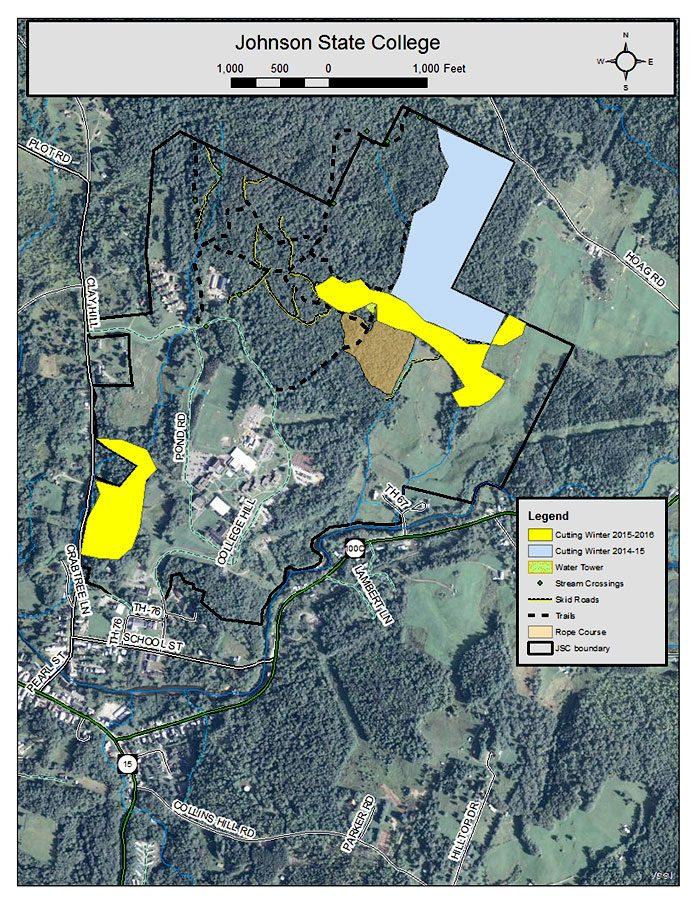Ongoing logging enhances campus
Forestry map of JSC campus
Logging operations continued on campus this past summer, once again following less-than-ideal working conditions last winter.
Approximately 100 acres are being logged. Operations started in November 2014, with a bidding process that helped narrow down the hiring process.
The main setback continues to be dealing with the weather, according to JSC Controller Toby Stewart, who has been working with the logging operations on campus since they started.
Stewart noted that he learned a great deal from Lamoille County Forester Ray Toolan, who was overseeing the project prior to his recent retirement.
State Lands Stewardship Forester Diana Frederick, who has taken over following Toolan’s retirement, noted that this past winter about 26 acres were cut. “Loggers harvested 47,644 board feet of saw logs,” said Frederick.
Frederick, too, said the weather has been a major problem for the project and that last winter was less successful than planned. “We didn’t get a lot of snow and really cold temperatures,” said Frederick. This resulted in a delay for one portion of the forest that needs to be cut, because it is accessed over a very wet piece of ground.
“It never got cold enough to freeze in a skid road, so that section didn’t get cut,” said Frederick. “The loggers worked an area that was drier, where they did have a couple of wet sections that took some time to freeze in.”
According to Frederick, about half of the cut volume from last winter’s harvest was mainly white pine, and the rest were a variety of different hardwood species. When all totaled up, about 50 cords of firewood have been harvested.
Frederick noted that when thinning a stand, they try to maintain a certain stocking of trees per acre. “When marking, we will start with removing the over-mature trees,” said Frederick. “Then we look to clear those of poor quality or poor health.”
Frederick says that in many areas, they will also remove some good quality and healthy trees to reach a desired residual stocking for that specific area.
“Trees, like all plants, need three things to grow and survive: sun, water and nutrients,” said Frederick. “The goal when conducting a timber sale is to give the best quality and healthiest trees, resulting in less competition for the finite resources to produce the next generation.”
By using these tactics, bigger trees will hopefully be created faster. “When a certain area is mature, the main point of a timber sale is to establish the next generation of trees,” said Frederick. “The forest at Johnson State College is thinning. This is because there are a lot of younger trees.”
Future cutting will depend on certain stands, said Frederick: “White pine tends to grow quickly and can be thinned every 10 to 15 years, while the northern hardwood stands would be thinned every 15 to 20 years.”
Stewart says that the overall financial benefit to the school is minimal. On the other hand, he says the project will enhance recreation, wildlife habitat, and watershed protection.



